We all know that routine maintenance is important for everything from our computers to our cars. But sometimes, we fall short. One of the most neglected routine car maintenance tasks is to check tire pressures and inflate them as necessary. That’s why newer cars have tire pressure warning lights, or tire pressure monitoring systems (TPMS), that let you know when you have under- or over-inflated tires (when any tire is 25% underinflated).
Older vehicles don’t have this useful warning light. So, don’t wait for a rupture to check or change a tire. Use this guide to learn how to check the pressure (PSI) of your vehicle tires and how to inflate them to the proper air level.
Why should you check your tire pressure?The number one reason why you should periodically check your tire pressure is SAFETY, but there are monetary and handling reasons as well:
Proper tire pressure (as recommended by the manufacturer) is needed to drive safely and efficiently. According to a 2009 report by the National Highway Traffic Safety Administration:
“…about 28% of light vehicles on our Nation’s roadways run with at least one underinflated tire. Only a few psi difference from vehicle manufacturer’s recommended tire inflation pressure can affect a vehicle’s handling and stopping distance. Poor tire maintenance can increase incidences of blowouts and tread separations. Similarly, underinflation negatively affects fuel economy.”
When your tires are underinflated, the tires get fatter, increasing their surface area. This causes high heat generation and extra resistance that could result in higher fuel costs, blown out tires, tire wear, and loss of control.
If you feel like you’re spending too much at the gas pump, it might be your tires. According to the US Department of Energy:
“You can improve your gas mileage by 0.6% on average—up to 3% in some cases—by keeping your tires inflated to the proper pressure.
Under-inflated tires can lower gas mileage by about 0.2% for every 1 psi drop in the average pressure of all tires.”
In addition to safety and fiscal concerns, keeping your tires properly inflated will also reduce your impact on the environment. When your tires are properly inflated, you’ll pay less for gas, replace your tires less often, and improve your handling and stopping distance. You’ll also feel better knowing that you are emitting less carbon dioxide and other harmful substances into the atmosphere.
What is the right PSI level?PSI stands for pounds per square inch. The recommended PSI for your vehicle’s tires is determined by the vehicle’s manufacturer and the recommended tire size.
One big question that we get is whether you should follow the recommended PSI level on the tire itself or the recommended PSI level printed in your owner’s manual or on the placard inside of door edge, glove box door, or fuel door.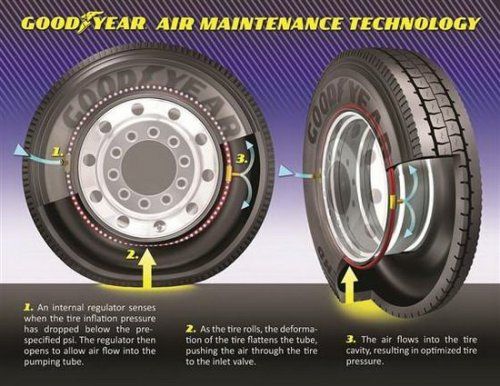
Do NOT use the max PSI that is printed on the tire sidewall. This is not the recommended PSI level. The pressure amount on the tire is normally the maximum allowed pressure. The correct PSI level is almost always less than what you see printed on the side of the tire. Over-inflation can lead to poor handling and comfort, overheating and blow outs. Over 40 PSI is a dangerous level for most vehicles!
Make sure you always use the recommended PSI as provided in your owner’s manual and don’t go any more than 5 PSI over the recommended level. You should make sure, however, that your tires are appropriate for your vehicle. You can do this by checking the car’s owner’s manual or the placard that is on the inside of the driver-side door, glove box, or fuel door.
Most car tire pressure recommendations range from 30-35 PSI.
How often should I check tire pressure?A question in many minds is when is the appropriate time and frequency for checking and inflating vehicle tires.
A quick google search will reveal a variety of different opinions and suggestions. Some say that you should check your tire pressure every 2nd visit to the gasoline station, while others say once every 3-6 months is OK.
Most tire and vehicle manufacturers, on the other hand, will say that you should check your tire pressure at least once every month, or every second trip to the gas pump. Your tires will lose around 1 PSI each for every month that goes by.
Unfortunately, not one answer will fit every situation. There are several factors that influence how often you should check your tire pressure, including:
Did you know that for every 10°-drop in temperature, you lose 1 pound of pressure?
If you have a leaky valve or a small puncture, you will lose air pressure much more quickly. This is one more reason why you should frequently check the tire pressure on all of your tires.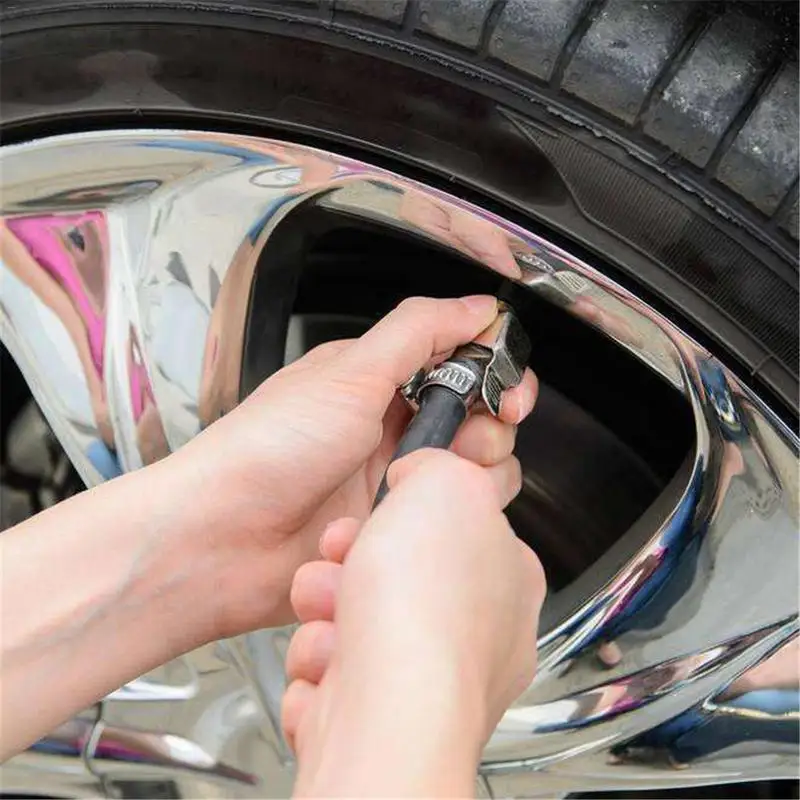
Since tire pressure constantly fluctuates, it’s important to check it periodically (at least once a month) and add air as necessary.
How to Check Tire PressureFinding out the tire pressure of your tires is incredibly easy. All you need is a pressure gauge (click here for additional items you should have in your vehicle).
Just make sure that you are checking your tires when they are relatively cold. If you check your tire pressure after a long drive, you will get an inaccurate reading since heat will temporarily increase the tire pressure reading.
Unfortunately, not all pressures gauges are created equal. Some are better than others. We recommend shelling out a couple extra bucks for a digital reader. The pop-up, stick-type versions are notoriously inconsistent and unreliable. A reliable gauge will be well worth the investment. Prices range from about $5 for the stick-type and about $30 for the digital and dial-type pressure gauges.
You can also check your tire pressure at most gas stations or auto repair shops. Discount Tire offers free tire pressure checks and inflation.
Here are the steps for checking your tire pressure: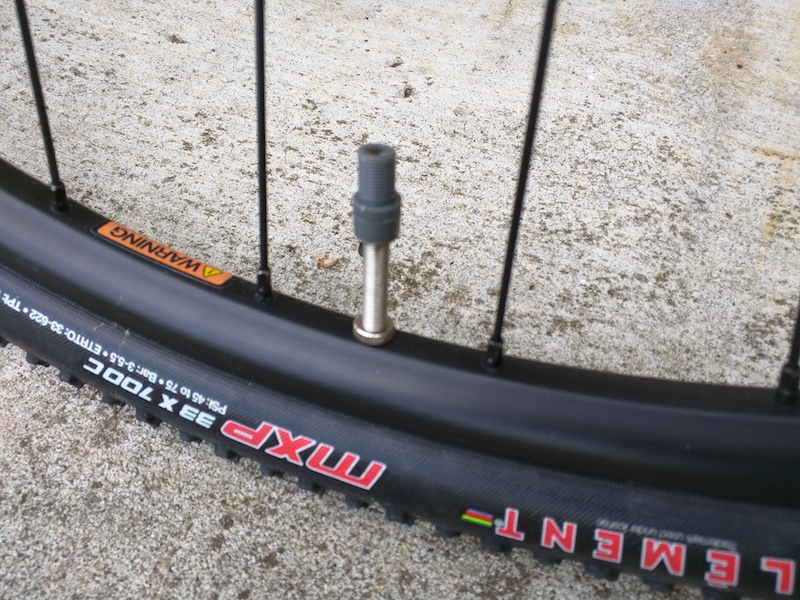 Check the tire pressure again. Release more air if necessary. If you release too much air, you can always add some air back.
Check the tire pressure again. Release more air if necessary. If you release too much air, you can always add some air back.It should only take you a couple minutes to check the air pressure of your vehicle’s tires. As soon as you restore tire pressure to the recommended levels, you’ll start experiencing the safety and savings that come with this regular maintenance task.
Watch this video for more information on how to check your tire pressure:
How to Inflate TiresHere are the steps for adding air to your tires:
 Instead, go to your local gas station that has a coin-operated air pump (ask the attendant if you can’t find it). You can also purchase your own automatic air compressor, but it will cost you around $50-$150.
Instead, go to your local gas station that has a coin-operated air pump (ask the attendant if you can’t find it). You can also purchase your own automatic air compressor, but it will cost you around $50-$150.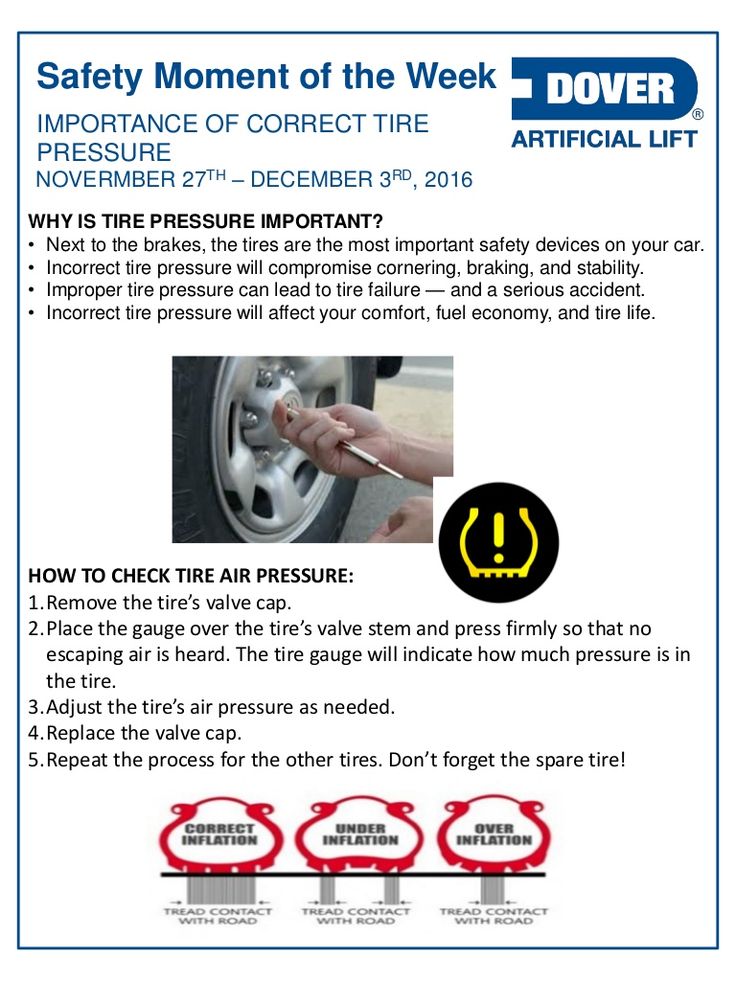 Hold it firmly against the valve as you listen to the air filling the tire.
Hold it firmly against the valve as you listen to the air filling the tire. You’ll want to screw them back on now.
You’ll want to screw them back on now.Remember, just one drop in PSI can lower your gas mileage by about 0.2%. For every 3-4 PSI units that your tire is underinflated, you are burning around 1% more fuel.
If your tires are flat, then you probably have a leak. Add air and see if you can drive around without the pressure dropping. If you hear air escaping the tire while you are filling up, then it’s time to replace the tire.
Tip: Learn how to use the air pump properly first. Some automatic air pumps at gas stations have a handle/switch that you need to depress in order for the air to flow. When you let go of the handle, a tire pressure gauge will pop out showing you the tire pressure. At the same time, air will be slowly released. If your air pump has this kind of handle, then you will want to hold down the handle for most of the time, periodically releasing it to check the pressure reading. Consult your own tire pressure gauge for accuracy.
When should I replace my tires?If you check your tire pressure at least once a month as recommended, you’ll also get a good idea of the general condition of your tires and when you should replace them.
We recommend using the penny test:
Source: bridgestonetire.com
Click here for more car maintenance tips. Click here for car winterization tips.
Auto Simple wants you to find a vehicle you love at a price you can afford. We carry a large selection of hand-picked, Certified Pre-Owned vehicles, all with a 6 month/6,000-mile Powertrain Warranty.
If you have any questions, don’t hesitate to speak with one of our Online Specialists or give us a call:
Chattanooga, TN – (423) 551-3600
Cleveland, TN – (423) 476-4600
Dayton, TN – (423) 775-4600
Dalton, GA – (706) 217-CARS (2277)
Follow us on social media for more useful information on buying, selling, and maintaining vehicles: Facebook, Twitter, Youtube, and Google+.
Maintaining proper tire inflation is relatively simple and essential to the overall tire performance of your vehicle. A properly inflated tire will provide longer life, quicker steering response, better fuel efficiency and a smoother ride than an improperly inflated tire. Both underinflation and overinflation can cause headaches like premature treadwear and possible tire failure. The best way to ensure you're getting the most out of your tires is to check your tire pressure on a monthly basis.
Knowing how to use a tire pressure gauge is very simple. Here’s how to check tire pressure and refill your tires.
Items You Need When Checking Tire Pressure
Tire pressure gauge
Air compressor
Pen and paper
Your tire pressure gauge can be digital or standard. Auto parts stores typically carry both. Many auto parts stores sell portable air compressors that run from your car battery or 12v power port. Alternatively, you can use the air compressor found at most gas stations. They usually cost $0.50 or $1.00 to use.
Alternatively, you can use the air compressor found at most gas stations. They usually cost $0.50 or $1.00 to use.
Vehicle manufacturers specify PSI – literally “pounds per square inch” of pressure – assuming tires are cold. Tires are considered cold when the vehicle has been parked for three hours or more, or if the vehicle has been driven less than a mile (1.6 km) at moderate speed. PSI is the unit your pressure gauge uses to provide readings.
Look on the driver’s side door jamb or your owner’s manual to find the recommended cold tire PSI for your front and rear tires. If you cannot find it, you should consult your vehicle dealer, manufacturer, or a qualified tire professional.
If your front and rear tires require different pressure levels, write down the correct PSI for each to avoid getting confused as you move around your vehicle checking tire pressure.
Remove the valve cap from one of your tires. Then place the pressure gauge on the valve stem and press down hard enough so the hiss sound disappears and your gauge provides a reading. With a standard gauge, the air pressure will push a small bar out from the bottom of the gauge. Measurement units are etched into the bar. A digital gauge will show you the reading on a screen.
Write down the reading and repeat this process for all four tires.
Use an air compressor to refill any tires with low pressure. Many air compressors are different, so read directions carefully to be sure you’re using it correctly.
If you’re using the air compressor at a gas station, be sure to park so that the hose will reach all four tires. Insert change into the machine until you hear the motor running. Fill each tire by placing the end of the hose over the valve stem and pressing on the lever.
Using a gas station air compressor means your tires might be “hot. ” If it is necessary to adjust inflation pressure when tires are “hot”, set their pressure to 4 psi (14 kPa) above the recommended cold inflation pressure. Recheck the inflation pressure when the tires are cold.
” If it is necessary to adjust inflation pressure when tires are “hot”, set their pressure to 4 psi (14 kPa) above the recommended cold inflation pressure. Recheck the inflation pressure when the tires are cold.
After filling your tires, use the gauge to check pressure again. At this point, it’s ok if you overfilled the tires because you can always let some air back out. Never drive on overinflated tires. Overinflation can result in decreased traction, premature wear, and decreased impact absorption.
Make the above procedure a monthly ritual. Regularly checking your tire pressure is the best way to ensure your tires never dip far below the optimal PSI.
Accuracy matters and you should keep that in mind when choosing a gauge. For just a few dollars, you can find a quality, accurate tire pressure gauge that gives accurate readings. If you’re not sure which one to purchase, ask a professional technician which he or she prefers.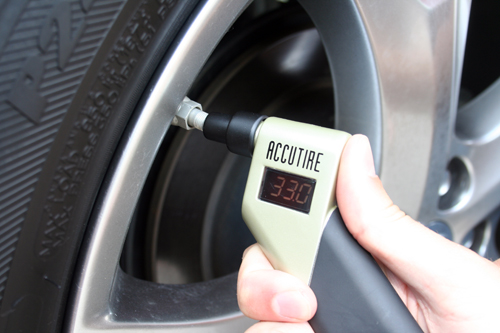
A digital tire pressure gauge will provide accurate readings, but don’t forget that it operates on a battery. If you think having to replace the battery will prevent you from using it, it’s best to go with a standard gauge.
It’s best to use your personal tire gauge versus those available attached to air hoses at service stations. Of all the pressure gauges out there, they’re the most likely to be weathered, and possibly inaccurate.
There’s never a good time for a flat. That’s why Bridgestone DriveGuard tires are masterfully engineered to keep you moving for up to 50 miles at speeds up to 50 MPH without disruption.
There’s never a good time for a flat. That’s why Bridgestone DriveGuard tires are masterfully engineered to keep you moving for up to 50 miles at speeds up to 50 MPH without disruption.
See Details Find Your Fit
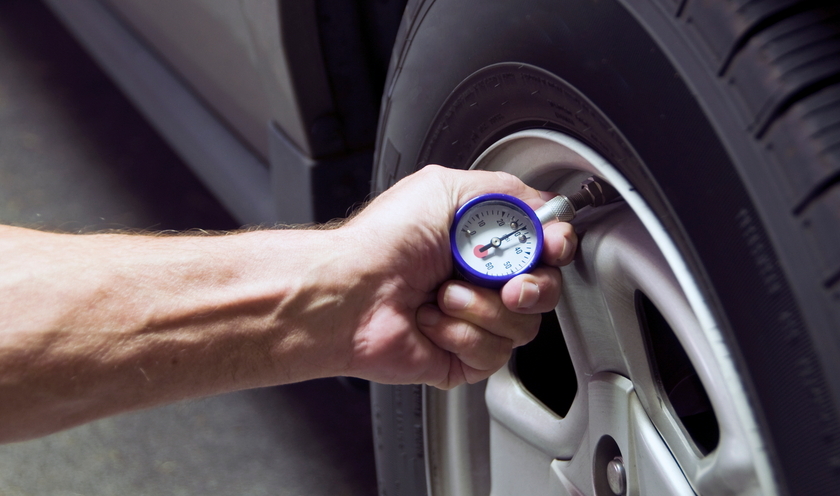
Car tire is responsible for driving safety and comfort. It needs to be kept in working order. This is a prerequisite for long and safe operation. Not all drivers know how to pump up a wheel, we will analyze the nuances of this work in more detail.
Tire pressure is an important parameter, it is he who is responsible for the main technical characteristics of the wheel. The car manufacturer calculates this parameter in advance and indicates it in the recommendations.
If a tire is underinflated, this will lead to increased fuel consumption in the first place. This is due to a decrease in the rolling coefficient. Uneven grip with the road surface also occurs, leading to a decrease in traffic safety, this is felt in the form of more difficult driving. Tire wear increases, with a strong drop in pressure, the rim of the disc can cut the sidewall.
It is also not worth pumping tires. The tire will wear unevenly, the middle part of the tread will suffer. Increased pressure can provoke an explosion and complete destruction of the tire on the road. In addition, the stiffness of the wheel will increase, and the braking efficiency will decrease.
Increased pressure can provoke an explosion and complete destruction of the tire on the road. In addition, the stiffness of the wheel will increase, and the braking efficiency will decrease.
Pressure checks must be carried out at least once a month. If there are sudden changes in temperature outside, it is necessary to check the parameter every two weeks. Be sure to check the pressure before every long trip.
Visually inspect tires in the morning. If there are doubts about the quality of the pump, it is worth checking the pressure, if necessary, pump up the tire. Checking and pumping should be carried out on all wheels, different tire pressures can lead to loss of vehicle controllability.
Be sure to check the condition of the spare wheel.
Tire pressure is determined by the car manufacturer, he finds out through tests to what extent the rubber can be inflated.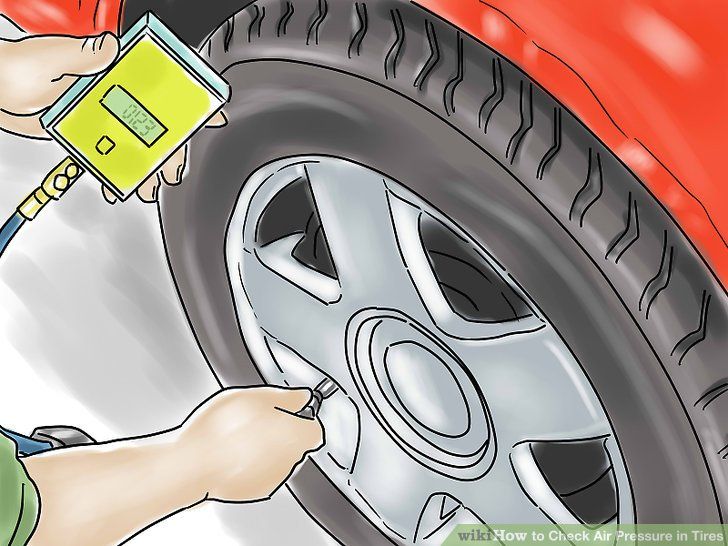 The data must be indicated in the documents for the vehicle.
The data must be indicated in the documents for the vehicle.
For greater simplicity, additionally indicate the parameters on the plate. It can be found on the A-pillar of the car or on the inside of the gas filler flap. In rare cases, a plate with the main technical parameters may be on the door. It remains to find a plate on your car and see to what pressure to pump tires.
There are certain pumping rules. They include not only data on how much air to pump into the tire, but also when to do it. The main requirement is to inflate the tire only after a long parking. The tire heats up while driving. According to physical laws, temperature directly affects gas pressure. Accordingly, immediately after the stop, the indicator will not be accurate.
It is necessary to wait until the temperature of the air in the tire is equal to the outside. It takes 3-4 hours for this. After waiting so long, you can accurately measure the pressure. It is most convenient to do pressure measurement and pumping in the morning, after overnight parking.
It is most convenient to do pressure measurement and pumping in the morning, after overnight parking.
Inflating a car tire is not difficult, but a beginner may have a few questions. We will analyze the stages of the process, in the end you will know how to properly pump up the wheel. To work, you will need a pump, you can use a foot or compressor. Now there are compressors that run on the cigarette lighter. If the pump does not have a pressure gauge, this device will also be needed.
Let's walk through how to inflate a tubeless tire step by step.
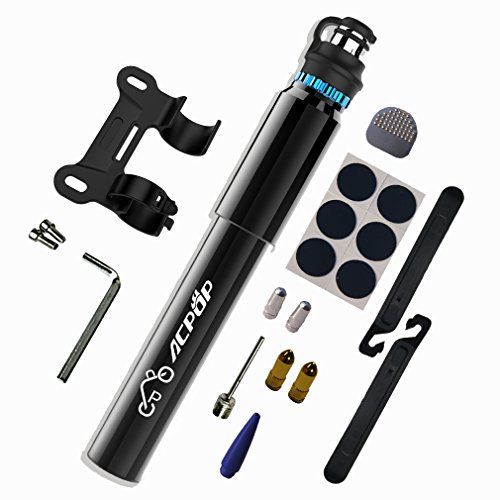 The cap must be placed carefully to the side so as not to lose.
The cap must be placed carefully to the side so as not to lose.
Further, all the described procedures are repeated on the remaining wheels, including the spare. Now the car is ready to drive.
If the pump is foot operated, all steps are the same, except for the power connection. The air supply is carried out by setting the pump piston in motion, this is done by foot.
Inflating a car tire is a simple job. This can be done by every car owner, even with no experience at all. The main thing is to know the basic rules, they are simple, it will not be difficult to fulfill them. But save time on a trip to a car service.
Optimum tire pressure is a guarantee of the safety of car passengers, as well as a guarantee of tire durability.
The car must be “cold”, that is, before the measurement, the car’s mileage must be less than a couple of hours, the vehicle must travel no more than 2 km.
When you need to measure the pressure urgently, subtract 0.3 bar from the measurement. The operation should be carried out before every big trip and more often than once every 30 days. It is important not to forget about the spare wheels: they also need to check the pressure level. The optimal level varies, so it’s worth asking the manufacturer for the exact figure, and it wouldn’t hurt to find the instructions for the car and look there. The value can be marked on the body compartment, gas tank and side pillar.
The value can be marked on the body compartment, gas tank and side pillar.
It all depends on the weather and operating conditions. The nominal mark varies, for example, on how warm or cold it is outside the car. Drops in winter have a strong effect, so experts recommend adding 0.2 bar to the measurement result to objectively determine the pressure level.
If the pressure level on the front axle is less than the nominal one, then this will change the handling: the wheels will turn poorly. Incorrect pressure in the rear will cause the car, on the contrary, to move too sharply. Slip on wet pavement appears due to a decrease of 0.5 bar, since the contact of the tire with the road becomes less. A level of 2 atmospheres will lead to full contact. The lower the contact, the greater the risk. Therefore, the pressure affects the quality of the ride.
In addition, the lower the level of inflation of the wheels, the greater the consumption of gasoline, and this promises financial losses. Too much pressure increases tire wear. Therefore, do not underestimate the importance of maintaining the pressure level set by the manufacturer. This can lead to a car accident.
Too much pressure increases tire wear. Therefore, do not underestimate the importance of maintaining the pressure level set by the manufacturer. This can lead to a car accident.
The ability of a tire to withstand loads is directly related to pressure. If the pressure is low, do not overload the car. When determining the optimal level, you do not need to focus solely on the tire load index.
Raising the level is permissible if it is necessary to increase the carrying capacity of the car. But for most cars, this is dangerous by the rapid destruction of tires. For trucks, special tires are sold that provide an additional degree of protection. They have a special designation: XL, Reinforced or "C".
The ability to accelerate the car depends on the inflation of the tires. To increase the speed, the pressure is increased. The ZR index on the tire indicates that with such a tire you can reach speeds of up to 245 km per hour. But we advise you to contact the manufacturer for details and clarify this indicator.
But we advise you to contact the manufacturer for details and clarify this indicator.
A pressure of 3.2 atmospheres is optimal for tires with a T marker. An increase of this figure by 0.3 atmospheres is suitable for tires marked H, W, V, Y, ZR. Exceeding these figures is dangerous in many ways. Adequate pressure ensures proper weight distribution and longer life.
When the nominal pressure in the tires is lowered, the wear resistance becomes less because heat begins to be generated. Because of this, overheating and destruction occurs. Pressure below normal leads to a deterioration in indicators such as the ability to maneuver and elasticity.
Note that tire pressure is an important property that must be monitored. Failure to pay attention to a detail that is so important for safety can lead to damage to the vehicle and to an accident. It should become a good habit for the driver to maintain the correct level.
Do not try to determine the pressure yourself. Use a manometer. This device will accurately measure the indicator. For a novice car enthusiast, it is not easy to realize the level of pressure by internal sensations, it is important to contact the salons and ask to pump up the tires. A decrease in temperature by 8 degrees entails a decrease in pressure by 0.1 atmospheres.
Use a manometer. This device will accurately measure the indicator. For a novice car enthusiast, it is not easy to realize the level of pressure by internal sensations, it is important to contact the salons and ask to pump up the tires. A decrease in temperature by 8 degrees entails a decrease in pressure by 0.1 atmospheres.
Don't underestimate the importance of tire condition. The life of people sometimes depends on the strength and wear resistance of wheels. In this regard, it is necessary to properly care for the tires.
As already noted, incorrect pressure can cause poor handling and tire damage. Let us remind you once again of the importance of checking the pressure on a car that has traveled no more than 2 km on the day of the control.
Is there a valve cap? If not, then the nipple will be prone to contamination. Check tires for cuts, cracks, holes or bulges. All this speaks of dilapidation. There should be no foreign objects, including wires and glass. Remember that a tire with such damage is not suitable for use. Do not bring to the destruction of the tire on the go.
Check tires for cuts, cracks, holes or bulges. All this speaks of dilapidation. There should be no foreign objects, including wires and glass. Remember that a tire with such damage is not suitable for use. Do not bring to the destruction of the tire on the go.
Wear leads to breaks. There is a fear of losing control when driving through puddles. Keep track of the remaining tread height. According to the traffic rules, it is forbidden to use a car whose residual height of the pattern is less than 1.6 mm (for cars), 1 mm (for trucks) and 0.8 mm (for motorcycles).
For winter tires, the minimum residual tread depth is 3-4 mm. When the tire is used for too long, there is a danger that the handling on the water will be worse.
For motorists with an aggressive style, tires deteriorate much faster. It is also worth taking into account the climate and features of the road surface.